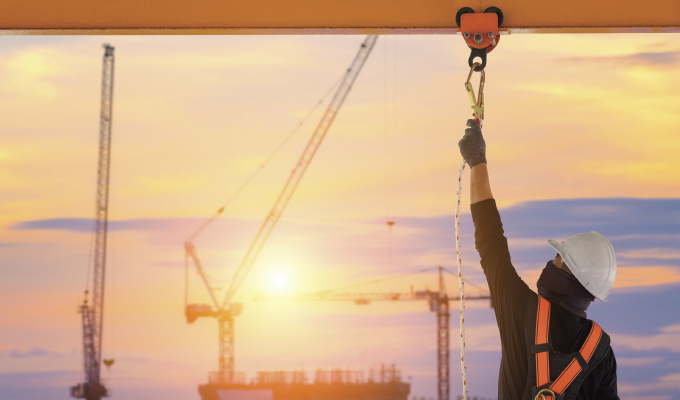Construction work is inherently dangerous, but the risks faced by workers can vary significantly depending on where they’re located. Despite being in an industry that works tirelessly to maintain rigorous safety procedures, there are still certain states that consistently see higher rates of construction-related incidents and fatalities.
A new study by personal injury experts Jones & Swanson compiled data regarding fatal accidents across various industries in different states across America to determine the most dangerous states for construction workers.
TEN WITH TROUBLES
North Dakota is the most dangerous state for construction workers, with 22 fatal injuries per 100k workers. North Dakota’s boom in the oil and gas industry has led to a surge in construction activity, often occurring in remote areas with harsh weather conditions. Due to rapid growth, companies can often suffer from strained resources, potentially leading to oversight lapses and worker shortages, increasing the risk of accidents.
Ranking second is Louisiana, with 21.6 fatal injuries per 100k workers. Coastal construction and hurricane recovery efforts expose workers to unique hazards, such as flooding and storm damage. Despite these hazards, the Louisiana government cited “falling” as the main cause of construction related deaths.
Placing third is Tennessee, with 18 fatal injuries per 100k workers. Rapid population growth and infrastructure development in Tennessee may have led to rushed projects and compromised safety standards for workers. The growing automotive industry and infrastructure projects in Tennessee also increase the risk of falls from heights, struck-by incidents, and electrocutions.
Nebraska ranks fourth, with 16.2 fatal injuries per 100k workers. Road and bridge construction projects, often in rural areas, expose workers to risks of falls, struck-by incidents, and heavy equipment accidents. Despite the substantial number of constructions related deaths, it’s the Agriculture, Forestry, Fishing, and Hunting industry that has the largest number of fatal accidents in Nebraska, with 23.2 per 100k workers; this is due projects such as grain bin maintenance posing specific hazards like engulfment, falls, and machinery entanglements.
Placing fifth is Maine, with 15.6 fatal injuries per 100k workers. Road, bridge, and housing construction projects in Maine, often in rural areas with challenging terrain, expose workers to risks of falls, struck-by incidents, and heavy equipment accidents.
South Dakota ranks sixth on the list, with 15.1 fatal injuries per 100k workers.
Harsh weather conditions, including blizzards and extreme cold, create additional challenges and risks during outdoor construction projects, specifically those that involve working from heights, such as wind turbine construction and maintenance.
Placing seventh is South Carolina, with 14.9 fatal injuries per 100k workers. The booming tourism industry in South Carolina increases the demand for new hotels and resorts. The construction of large infrastructure projects exposes workers to risks of falls from elevated work platforms, being struck by vehicles or equipment, and trench collapses during excavation work.
Ranking eighth is Delaware, with 13.5 injuries per 100k workers. Construction activities related to chemical processing plants and refineries expose workers to risks of fires, explosions, falls from elevated work platforms, and exposure to hazardous substances.
Arkansas places ninth, with 13.3 fatal injuries per 100k workers. A significant portion of workers in Arkansas are employed in high-risk sectors like manufacturing and mining, which often involves workers also being contracted for various construction projects related to these industries, exposing workers to hazards such as falls from heights, struck-by incidents, and exposure to hazardous materials.
Rounding off the top ten is Mississippi, with 13.1 fatal injuries per 100k workers. Mississippi’s high rate of construction fatalities stems from a combination of factors. The state’s significant presence in high-risk sectors like manufacturing and energy exposes workers to falls, struck-by incidents, and hazardous materials. Additionally, the state’s hot climate can lead to illness and fatigue. A potential shortage of skilled labor may also increase the risk of accidents, as less experienced workers may be more prone to errors.
“The alarming rate of construction fatalities in the US is a complex issue with multiple contributing factors, including rapid development timelines, natural hazards, and an often-transient workforce,” says Chase Swanson, partner at Jones & Swanson. “It’s important for construction companies to focus on enhanced safety training, stricter enforcement of regulations, and a greater focus on preventive measures to help reduce these tragic incidents.”
For More Information
The personal injury attorneys at Jones & Swanson have more than 45 years combined experience representing individuals and families throughout Marietta and the state of Georgia. For more, visit www.awjlaw.com.


